In the Czech Republic very close to Austria is the town of Český Krumlov, which is crossed by the River Moldava, is longer in the country and they have as much history as beauty, so it is one of the heritage of humanity of the Unesco.
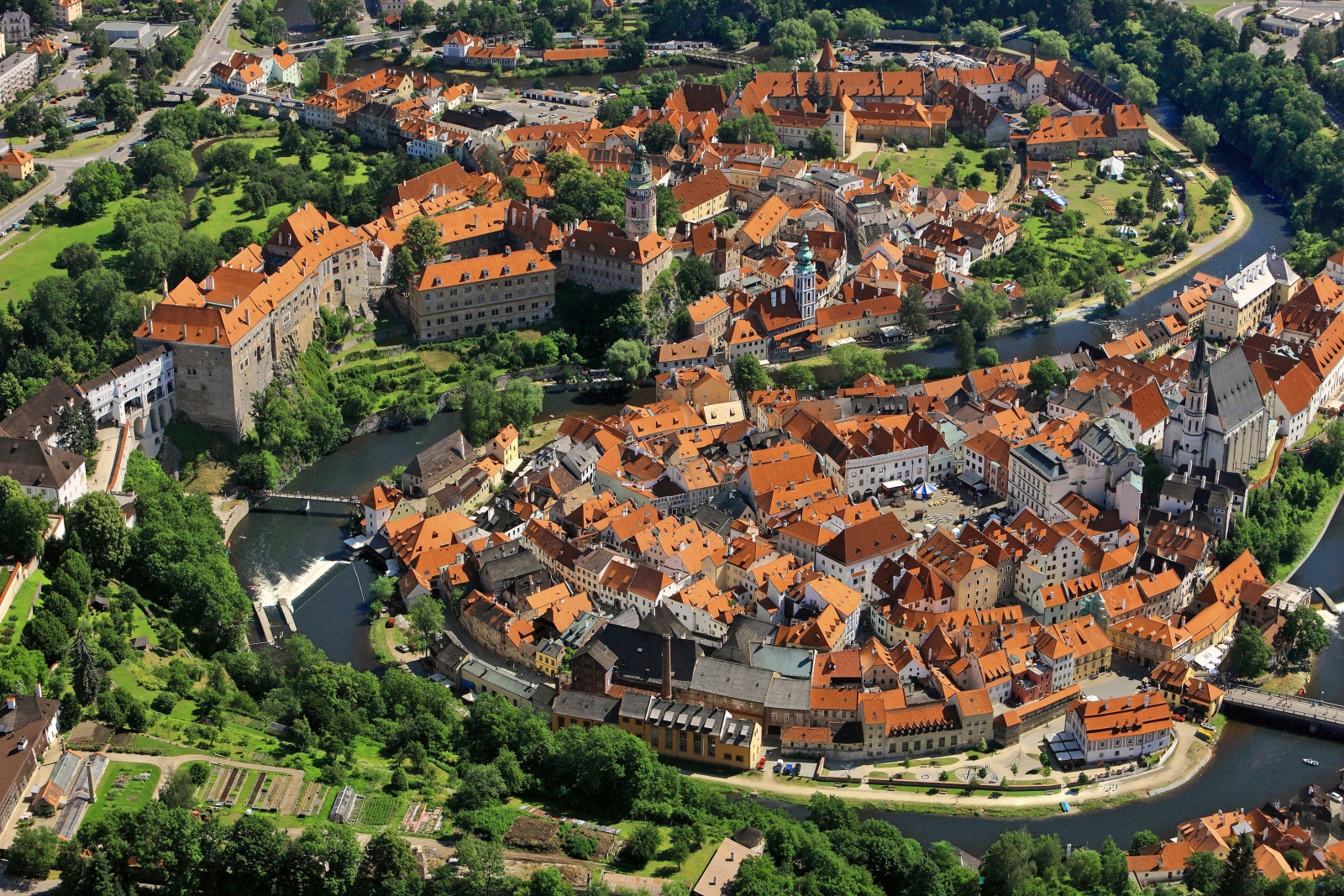
Český Krumlov has settled 135 km (84 mi) south of the capital of the Czech Republic - Prague. It is situated on both of the Vltava river banks among the Bohemian Forest Hills. The highest point of the municipal territory is the hill Vyšný vrch at 750 meters (2,443 ft) above sea level.
We will give you an idea of what Český Krumlov is - you can see more than 300 protected historical monuments, among which stands out the second biggest palace complex in Europe in the Czech Republic and one of the oldest and best preserved Baroque theaters in the world. On our website, you can find a local private English-speaking tour guide in Czechia who speaks your language and will be able to show you around the city, castle, and province of Czech Bohemia for a short excursion or full-day tour.
 The main landmark of the city is Český Krumlov Castle, which is the largest castle complex in the Czech Republic after Prague Castle. No less important is the Na płašti bridge, which connects the castle garden with the castle. The medieval center of the city, which surrounds the meanders of the Vltava, has been a city heritage reserve since 1963 and has been on the UNESCO World Heritage List since 1992. In 2003, the suburb of Plešivec (south of the historic core) was declared a city monument protective zone.
The main landmark of the city is Český Krumlov Castle, which is the largest castle complex in the Czech Republic after Prague Castle. No less important is the Na płašti bridge, which connects the castle garden with the castle. The medieval center of the city, which surrounds the meanders of the Vltava, has been a city heritage reserve since 1963 and has been on the UNESCO World Heritage List since 1992. In 2003, the suburb of Plešivec (south of the historic core) was declared a city monument protective zone.
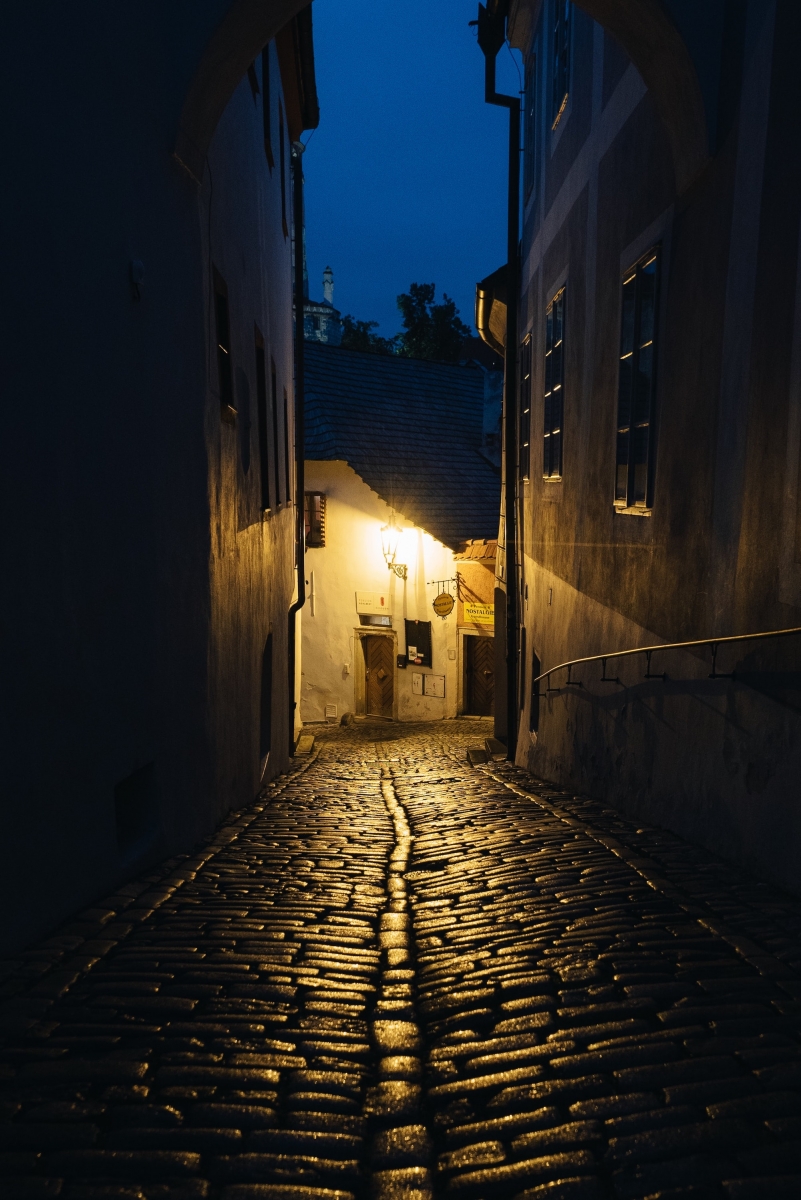
Český Krumlov State Castle
It is the original Gothic castle rebuilt mainly in the Renaissance style. It consists of the Lower Castle (the original Castle) with a dominating tower and the Upper Castle. The building development from the 14th to the 19th century has been preserved in the original layout, material composition, interior installation, and architectural detail. The monumental complex of the Český Krumlov castle is situated on an elongated high rock promontory, which is surrounded by the Vltava river from the south and the Polečnice stream on the north side.
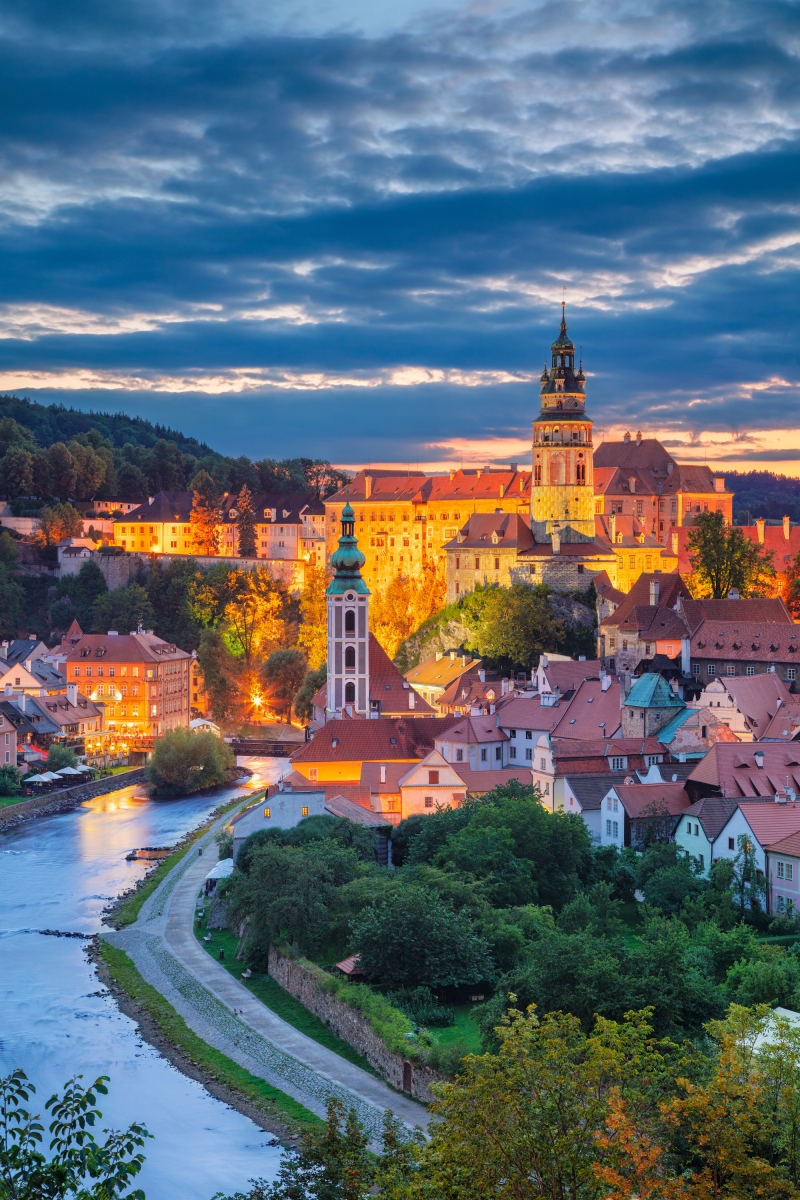
The castle was probably founded by Vítek II. from Prčice, the first written mention is in a German poem from 1240, Witico de Chrumbenowe is mentioned there, so this is him who probably built today's Castle with a tower. When the Krumlov branch of the Vítkov family died out in 1302, the castle was inherited by Jindřich I of Rožmberk, who also moved here and expanded the Lower Castle. His son Peter I. of Rožmberk built the Upper Castle, which Oldřich II. de Rožmberk (1403–1462) rebuilt. Major structural modifications took place under the supreme burgrave Vilém of Rožmberk (1535–1592). His brother Petr Vok got into so much debt that he had to sell the castle to Emperor Rudolph II, who gave it to his illegitimate son Julius Caesar (also known as Juan d'Austria). In 1622, Emperor Ferdinand II. Krumlov from the Eggenberg family commissioned the baroque reconstruction of the castle, the construction of the first wooden theater (1680), and the establishment of gardens.
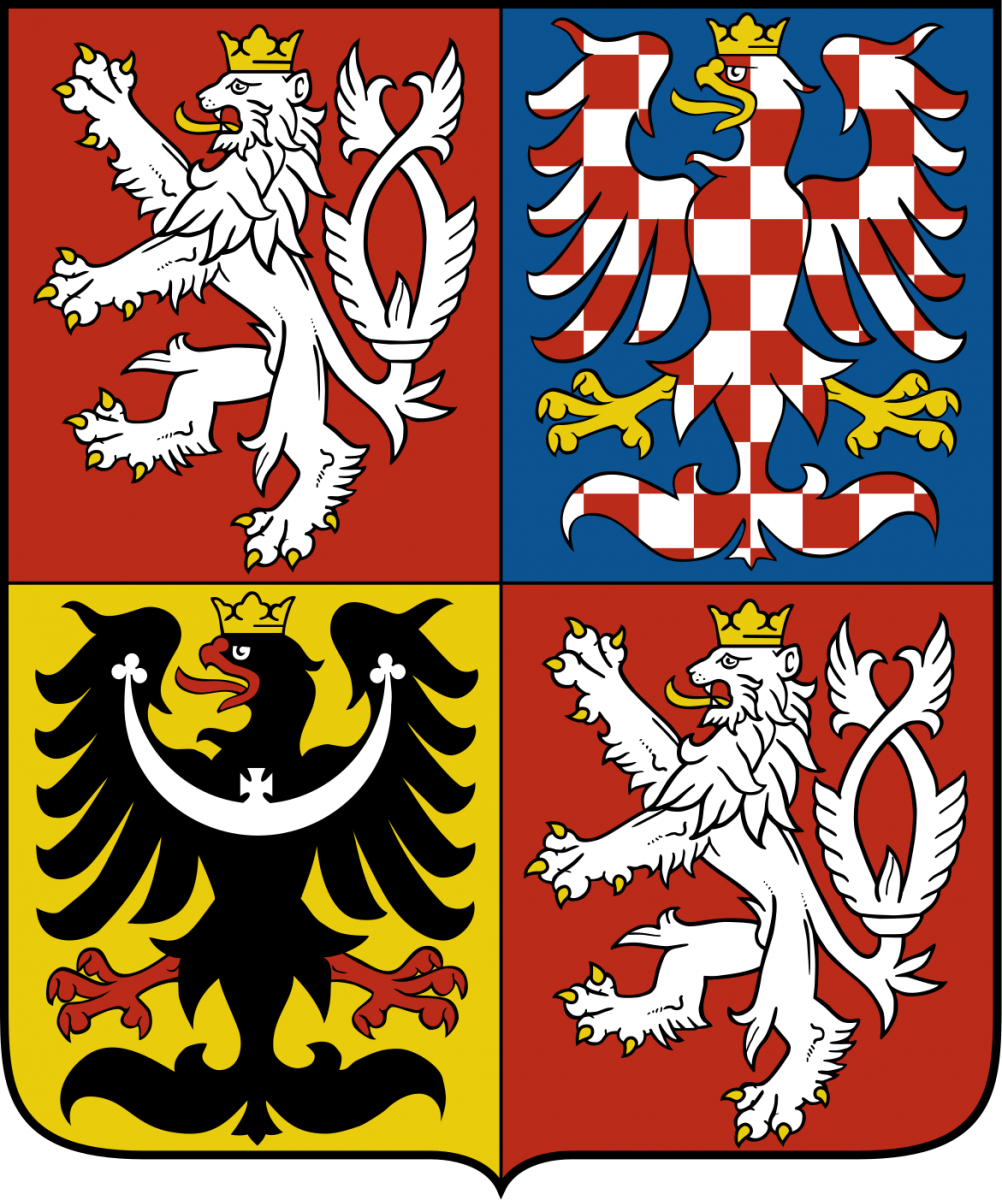
The large Czech Republic state coat of arms which has been used since 1990 is a quadrangular shield. In the first and fourth fields, you can see the historical coat of arms of Bohemia a lion with silver two-tail leaping with armor and a crown of pure gold on a magenta field. In the second field, there is the coat of arms of Moravia a checkered Eagle of Moravia in silver and red colors with armor and a crown of pure gold on a royal field. The ebony eagle with a silver peritoneum (crescent-shaped) represents the coat of arms of Silesia in the third field, with a cross in the middle, ending in trefoils, and a crown of pure gold and red armor on a golden background. The great national emblem represents the union of all the historical lands of the country. The large state coat of arms is used for the external representation of the Czech Republic and for the designation of buildings in which state administration, state offices, etc. are located.
The grounds include forty buildings and palace buildings centered around five castle courtyards and 10 hectares of castle gardens. The entire area of the castle and Palace is passable, accessible to the public, and in season, especially in the early evening, a walk through the individual courtyards is an experience. During the exterior tour of the castle in the company of a local private English-speaking tour guide in Czechia, you can walk through the so-called Lower Castle, which consists of the I. courtyard (Rejdiště) and II. a courtyard called Gardové. The journey continues through III. courtyard and IV. courtyard, which forms the Upper Castle complex. You walk over the Shroud Bridge to the V. courtyard and then to the vast castle garden with the famous revolving auditorium.
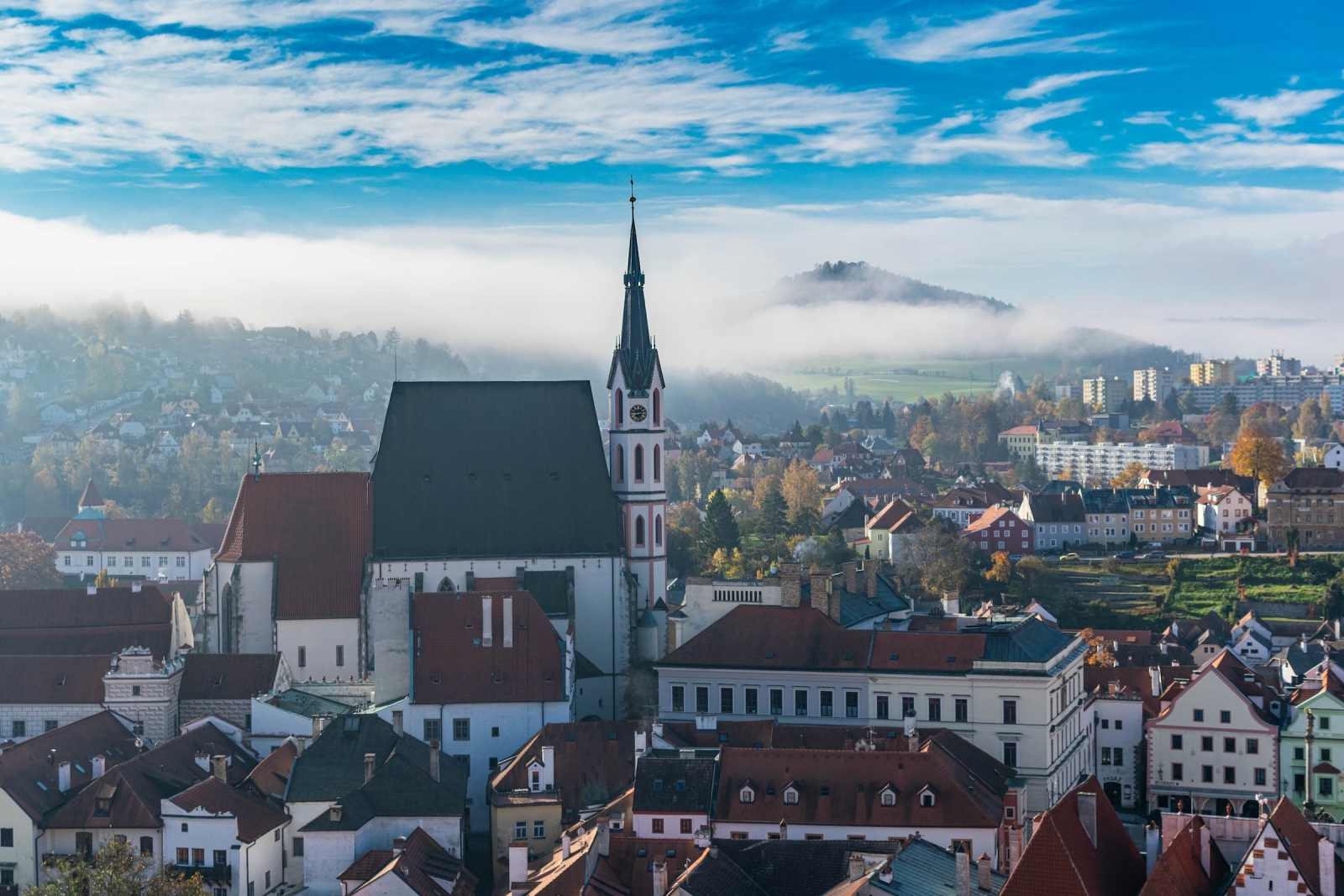
The area can also be divided into the following units:
- Lower Castle – the most original part of the castle, the so-called Castle with a dominating tower
- Upper Castle – the main part of the castle grounds surrounding III. and IV. courtyard
- Mantle bridge – a multi-story bridge over the Deer Garden connecting the castle, the Baroque theater, and the castle garden from 1764
- Castle Baroque Theater – one of the few surviving Baroque theaters in the world from 1681
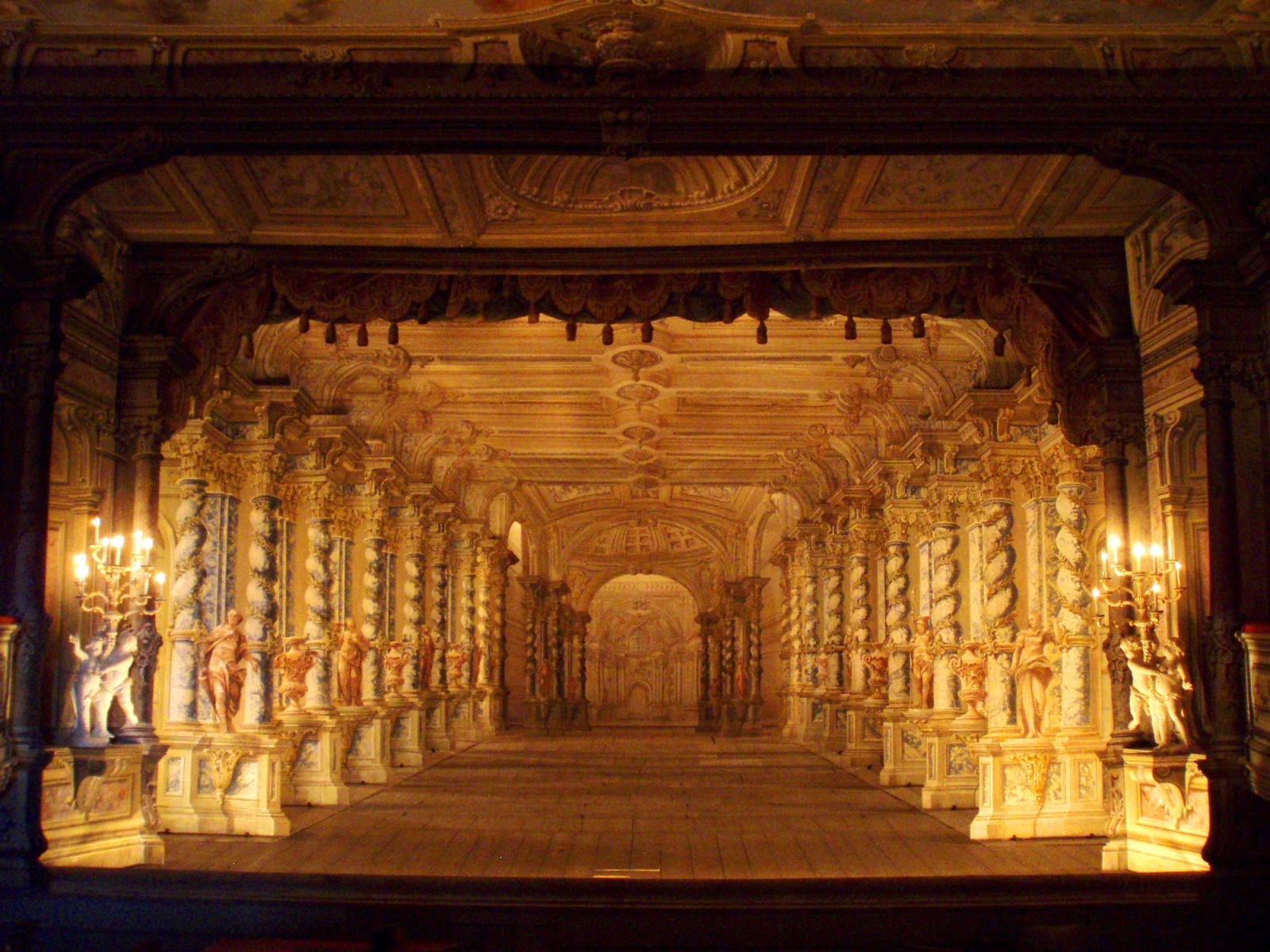
The Baroque Theater in the Castle of medieval city Český Krumlov is a gem in the theater heritage of the world.
- Summer and Winter riding school
- Castle Garden was founded in the second half of the 16th century, 700 m long, with a total area of 10 ha. The castle garden is divided into a French and an English part. In the first name, there is the Caskádová fountain, and in the second, the baroque summer palace of Belárie together with a revolving auditorium, used in the summer season for open-air theater and opera productions.
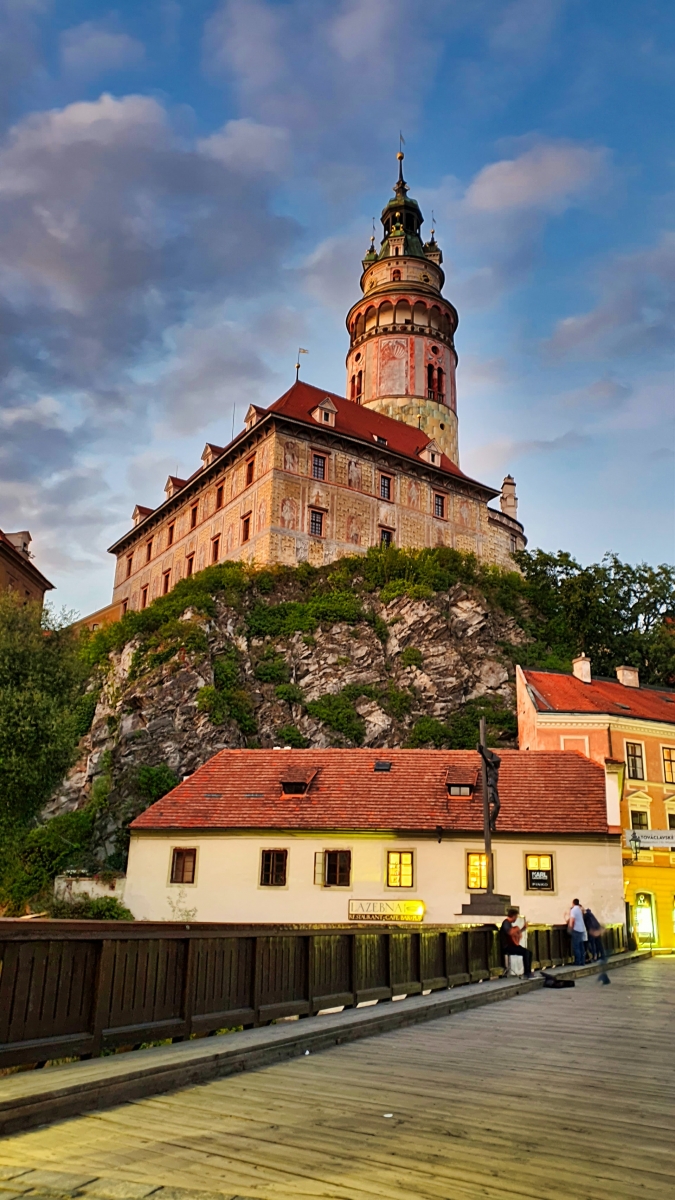
The Castle tower is encircled by the palace of the Little Castle and is constructed on a limited cliff above the district of Latrán and the River Vltava on the territory of Český Krumlov Castle.
- The height of the tower is 54,5 m
- The total height above the Vltava river is 86 m
- Number of steps in the Castle tower (from the bottom of the tower jail) 79
- Maximal diameter of the tower is 12 m
- Maximal thickness of the wall is 3,7 m
This is a six-storied rounded tower. The first two stories of the lower part are much more expansive and are isolated from the upper part by the cornice, with the original ceilings dating from the 1570s. The front is ornamented with architecture which in reality is just illusive paints. The Belfry is settled on the 4th floor, where 4 bells are set on a special construction fixed to the high ceiling chamber. The 5th floor is an arched barrel-vaulted gallery with diagonal elements. The corridor leads upwards via the Renaissance doorway. The clock room is on the 6th floor and has just a small round window.
The Castle Tower is the symbol of medieval Český Krumlov, of its beauty and history. There are many amazing details in the construction of the tower and Little Castle nearby. The tower is open to the public and suggests a stunning view over Český Krumlov and the areas around.
The Castle size will leave you surprised compared with the dimensions of the village, it is the second largest nationwide and once inside, you walk through gardens in the rococo style, and you'll see the St. Vitus Church and a museum. But the surprising thing is that there is a breeding of bears in the moat and you can see how they live and interact.
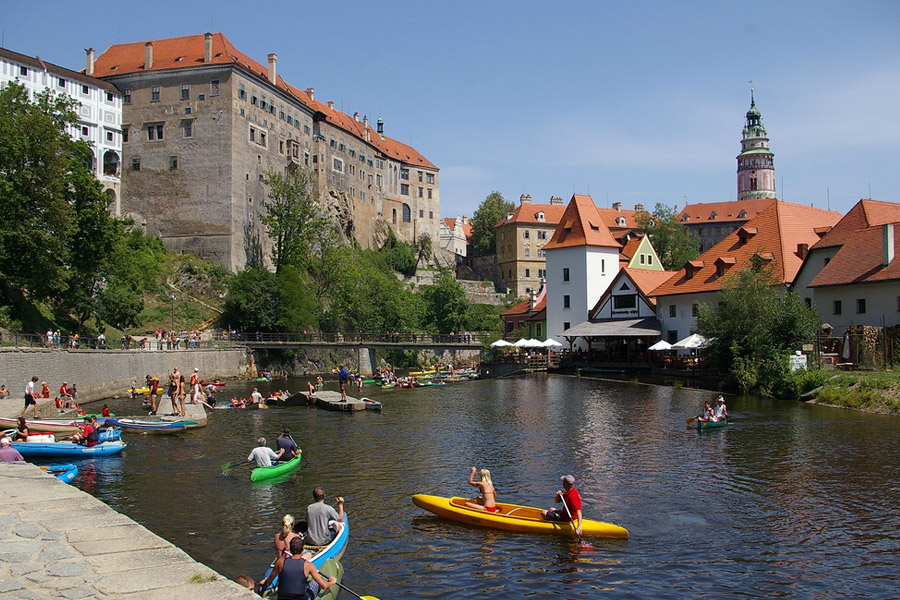
Inner city district
The inner city is the central part of the city with the adjacent Ostrov, which is completely surrounded by the meander of the Vltava River. The connection with other parts of the city is ensured by three bridges – Lazebnický most, Dr. Edvard Beneš, Na Horní bráně bridge; and the so-called Jelení lávka. The system of streets with a regular square has remained almost unchanged since its foundation. Here we can find a large number of well-preserved townhouses - Gothic, Renaissance, and, to a lesser extent, Baroque. Let's name at least these:
- Town Hall – a Renaissance building from the second half of the 16th century
- Plague column fountain – originally a plague column from 1716 with an added 19th-century fountain
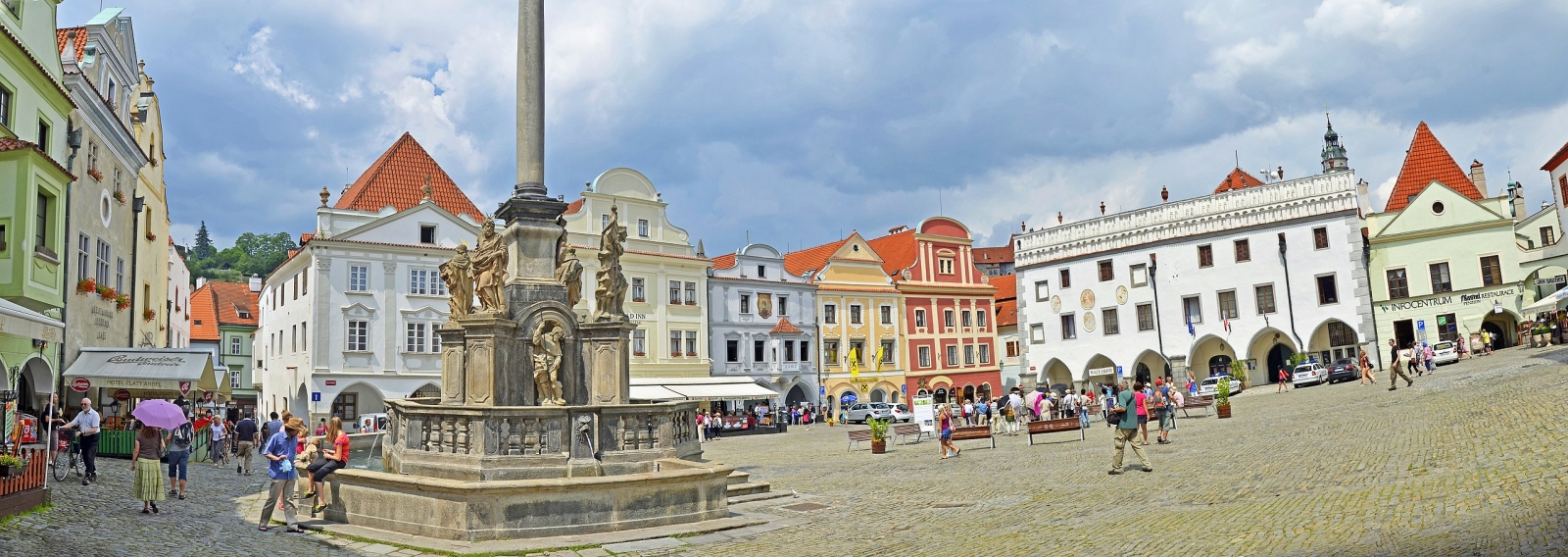
- Church of St. Vita – A gothic three-nave church from 1408–1439
- the so-called Krčín house – a building with a Renaissance facade from the 16th century, traditionally associated with Jakub Krčín from Jelčany and Sedlčany
- Vlašský dvůr – Gothic building with Renaissance decoration and facade, which in the past belonged to Jakub Krčín
- Jesuit college – a four-wing Renaissance building from 1586–1588 built by order of William of Rožmberk
- Široká street – the widest city street used for markets in the past

The Vltava River is 450 km long and is the longest river in the Czech Republic. It originates in Sumava, in the neighborhood of the village of Cherny Krzhizh, where its 2 tributaries merge together - the Teplá Vltava and the Studené Vltavy. The channel of the Vltava passes through the following settlements of the Czech Republic - Prague, Český Krumlov, České Budějovice, and in the town of Mělník it flows into the Elbe on the left. The Vltava basin, taking into account its tributaries, stretches along southern Bohemia and, together with the Elbe, forms a drainage system for the entire Czech Republic. The total area of the river basin is 28,000 square km (of which 95% is in the Czech Republic). The river got its name from the Germans, who called it Wilth-ahwa, which means “wild water” in ancient German, in turn, the Germans themselves, according to linguists, borrowed the name of the river from the ancient Celts.
The town district of Latrán
Latrán, once an independent town, is another historic district across the river, north of the Inner City, in the castle grounds, to which it properly belonged in the Middle Ages. It is connected to the Inner City by the wooden Lazebnické bridge, and here we can find a large number of smaller Gothic houses. The former part of the city called Neustadt, today the street – Nové Město, is also located near the quarter, where archeological research has proven the oldest human settlement in the city from the 5th millennium BC. In the Lateran section, let's name at least the following monuments although the local private English-speaking tour guide in the Czech Republic will tell you and show you much more interesting local attractions:
- Budějovice Gate (Latrán no. 104) – the youngest and at the same time the only surviving gate from the original medieval city fortifications. It was built at the expense of Petr Vok from Rožmberk in the years 1598–1602 by the architect Domenik Benedetto Cometta from Eckthurn.
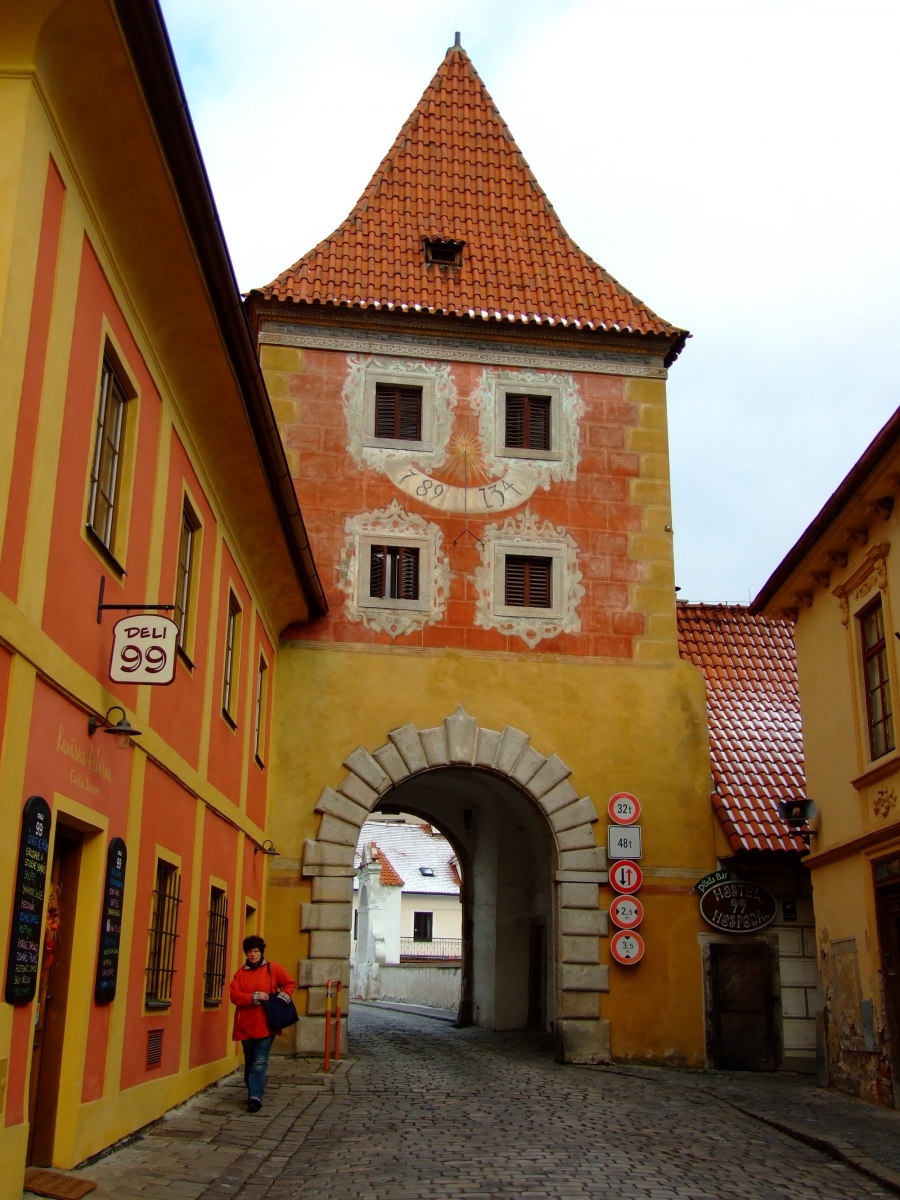
- Church of St. Jošta – the so-called German Church (Latrán no. 6) is originally a Gothic church from the period around 1330 founded by Peter I of Rožmberk, under Peter Vok of Rožmberk it was rebuilt in the Renaissance style in 1594–1599 (architect DB Cometta from Buckthorn) and dedicated to the Krumlov Protestants, until 1773 it was administered by the Jesuits, during which time it was baroque. It was abolished in 1787 during the Josephine reforms. It has been used as a residential building since the 20th century. The building also houses a marionette museum.
- Castle Brewery – formerly Schwarzenberg Brewery, today Eggenberg Brewery
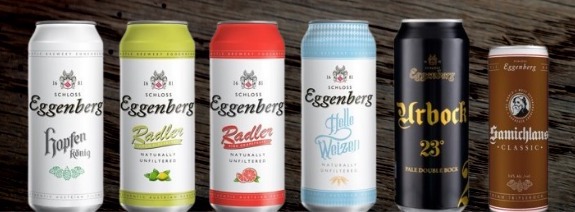
- Minorite monastery – today a monastery of the Order of the Crusaders with a red star. The unique triple monastery, which occupies the second place in terms of area after the Krumlov castle, was founded in the middle of the 14th century by the holders of the South Bohemian estate - Rožmberka. The current form of the monastery is based on several significant construction stages including the founding of the monastery in its late Gothic modification in the period between 1490–1500 (a unique set of late Gothic trusses has been preserved from this period) and the Baroque reconstruction that took place during the 17th and 18th centuries, which gave the complex its current form. The monastery complex underwent extensive revitalization. During it, a modern cultural and educational center was created in the former monastery buildings. The permanent exhibitions include an interactive exhibition, an exhibition on the life of the Poor Clares, and an exhibition on brewing. Interesting are the craft workshops, where those interested can try to make their own product from a blacksmith's, book printing, or, for example, glass workshop. Many surprises await visitors on the beautiful historic roofs of the monasteries – Dance macabre, Camera obscure, or a museum of architecture with a model of the city.
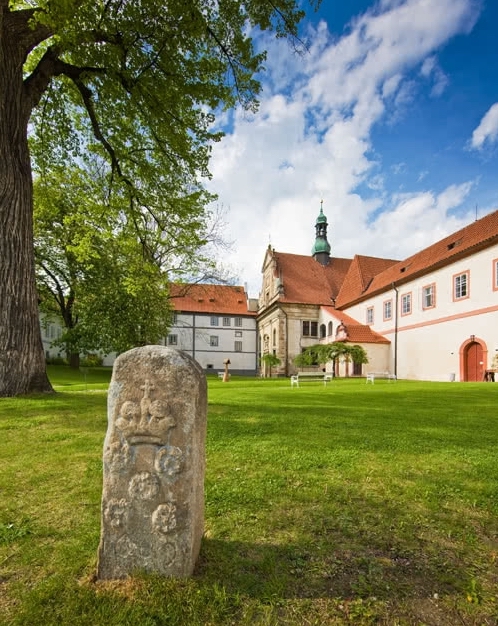
Plešivec district
is a part of the city located south of its historical core on the left bank of the Vltava. It consists of a historical suburb, which is adjacent to the southern edge of the historical core of the city, and a housing estate of the same name. A number of valuable houses, starting with the Renaissance, have been preserved here.
- Synagogue – the first reinforced concrete structure in Austria-Hungary; with an octagonal tower and moderate use of neo-Romanesque elements, it was built in 1909 by the local Jewish community.
- Plešivecké náměstí – a large number of Renaissance houses
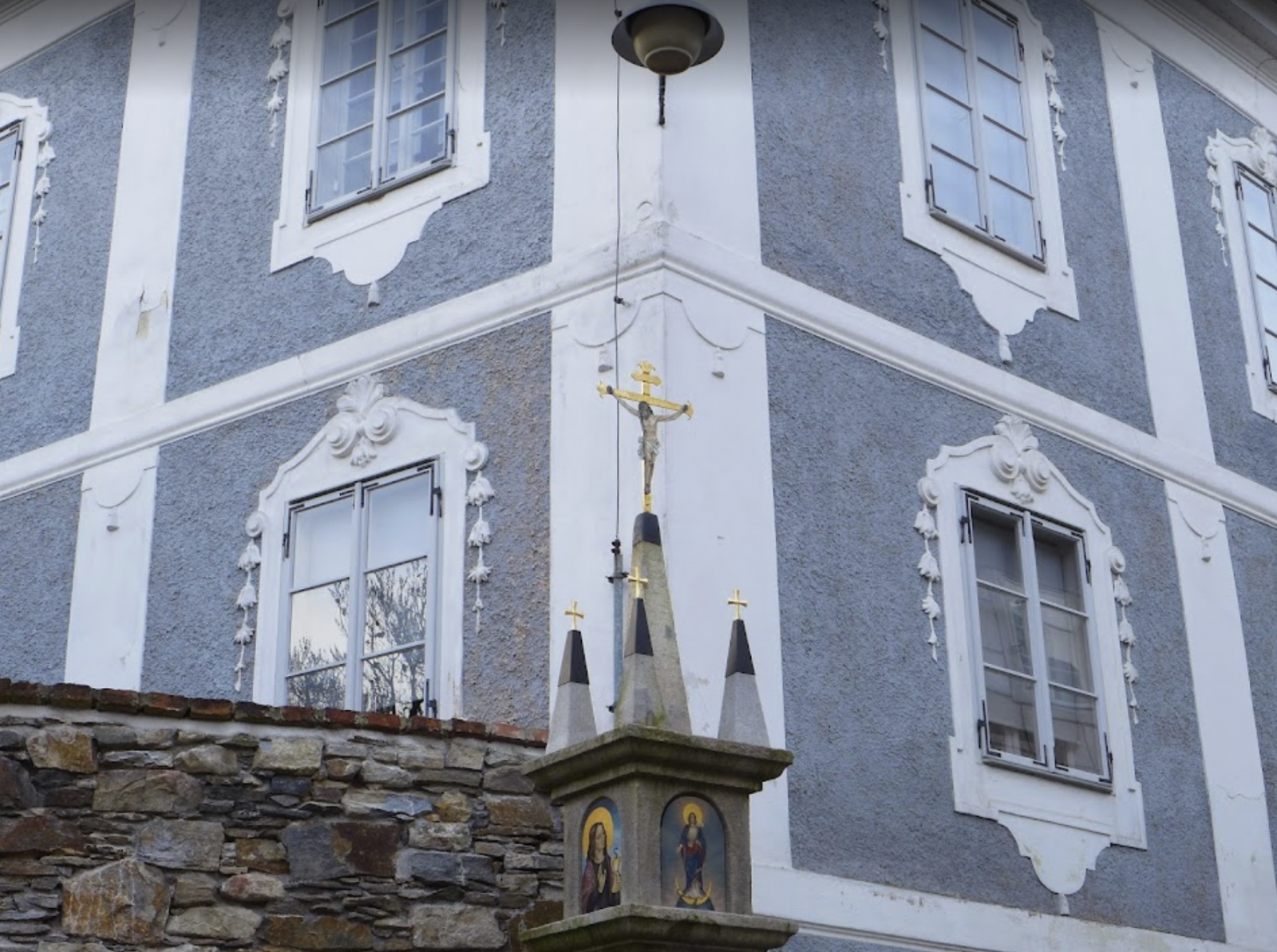
- Josef Seidel's photo studio - one of the few preserved and functional historical photo studios in Europe, which can be found in a family house from 1905 with original equipment
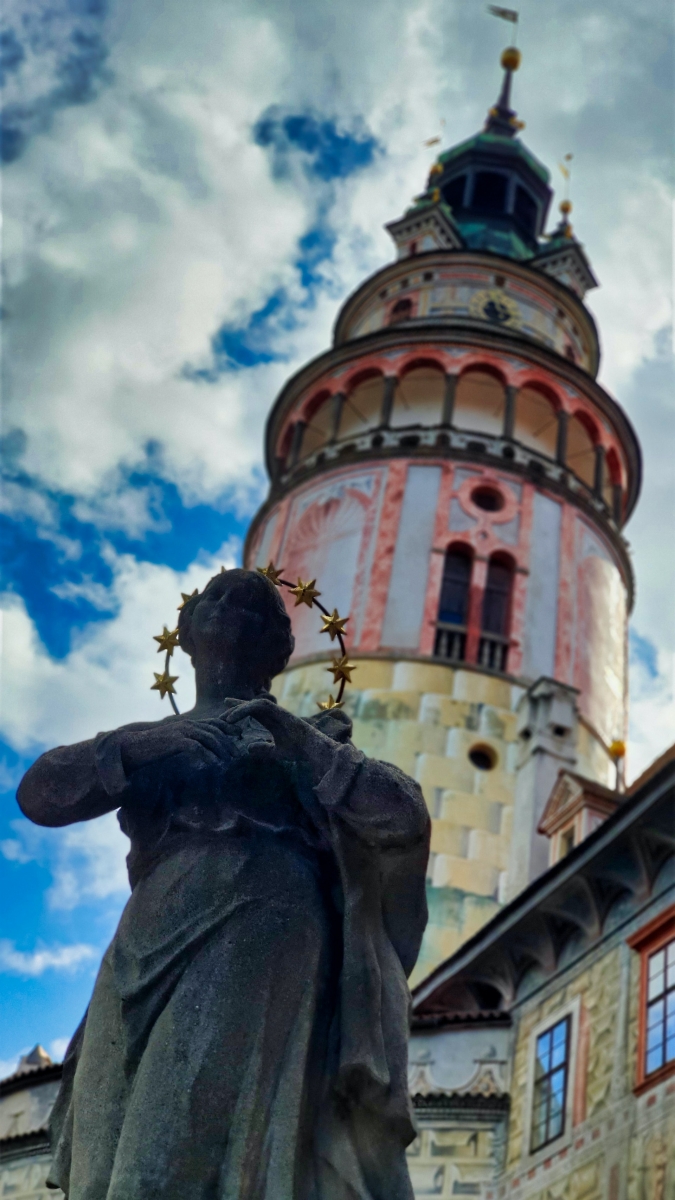
Chapel on Křížová hora
The octagonal chapel of Our Lady of Sorrows and St. The cross built-in 1710 is covered by an eight-part vault and covered with a tent roof crowned with a lantern with a poppy and a patriarchal (double) cross. The chapel is managed by a parish priest from Český Krumlov who, since 1991, has held a pilgrimage here every year on the feast of the Ascension of St. Crosses (September 14). During the year the chapel is inaccessible.
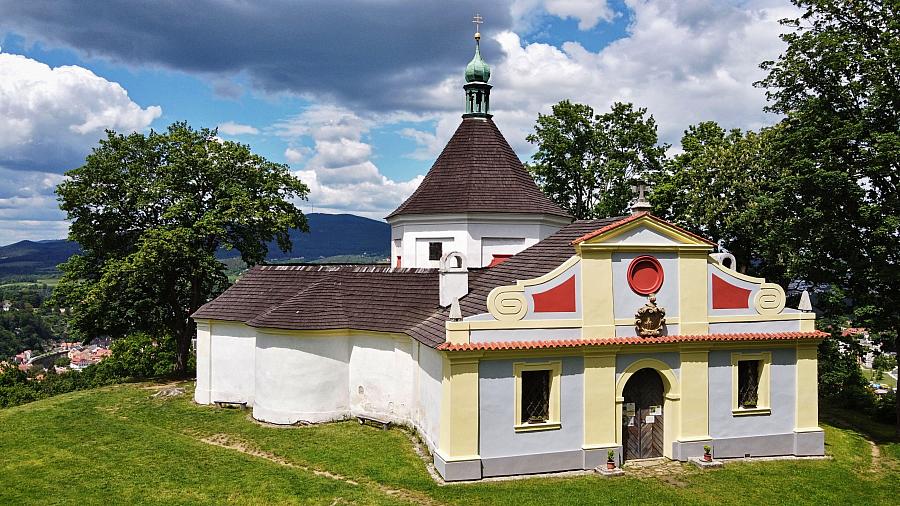
Museums and galleries
Do you like art? You are right here! In the Fotoateliér Seidel Museum, hear about the history of photography, have your photo taken with period accessories, or view one of the exhibitions held here. The Egon Schiele Art Center hosts exhibitions of classical and modern art, and an exhibition about the life and work of Egon Schiele can be seen all year round. And how about going out to meet famous people? They are already waiting for you in the Museum of Wax Figures. In addition to them, look forward to the section on pond farming, for which South Bohemia is famous. Fans of the golden liquid will be delighted by the Eggenberg brewery, where they organize tours including tastings.
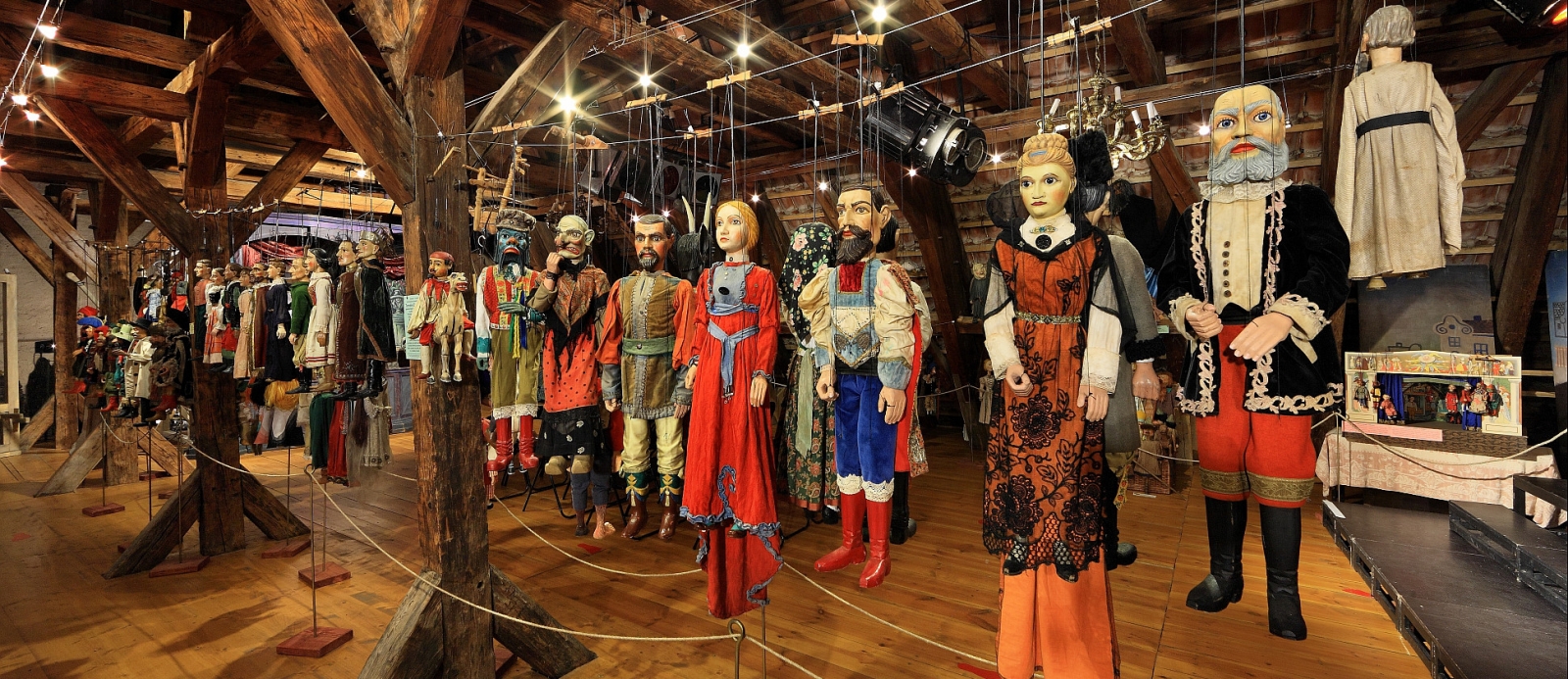
A very striking site that may be funny or frightening is the puppet Museum, exhibiting in addition scenarios and dolls dating back to the second half of the 19th century. In addition to seeing its mechanism, you can buy a puppet crafted by contemporary Czech artists - jugglers and woodcarvers. Another place that can be scary is the torture Museum, located in the basement of the town hall building, there are dozens of tools of the Middle Ages used to punish people, in this exhibition very real figures of how to torture and stunning visuals were done.
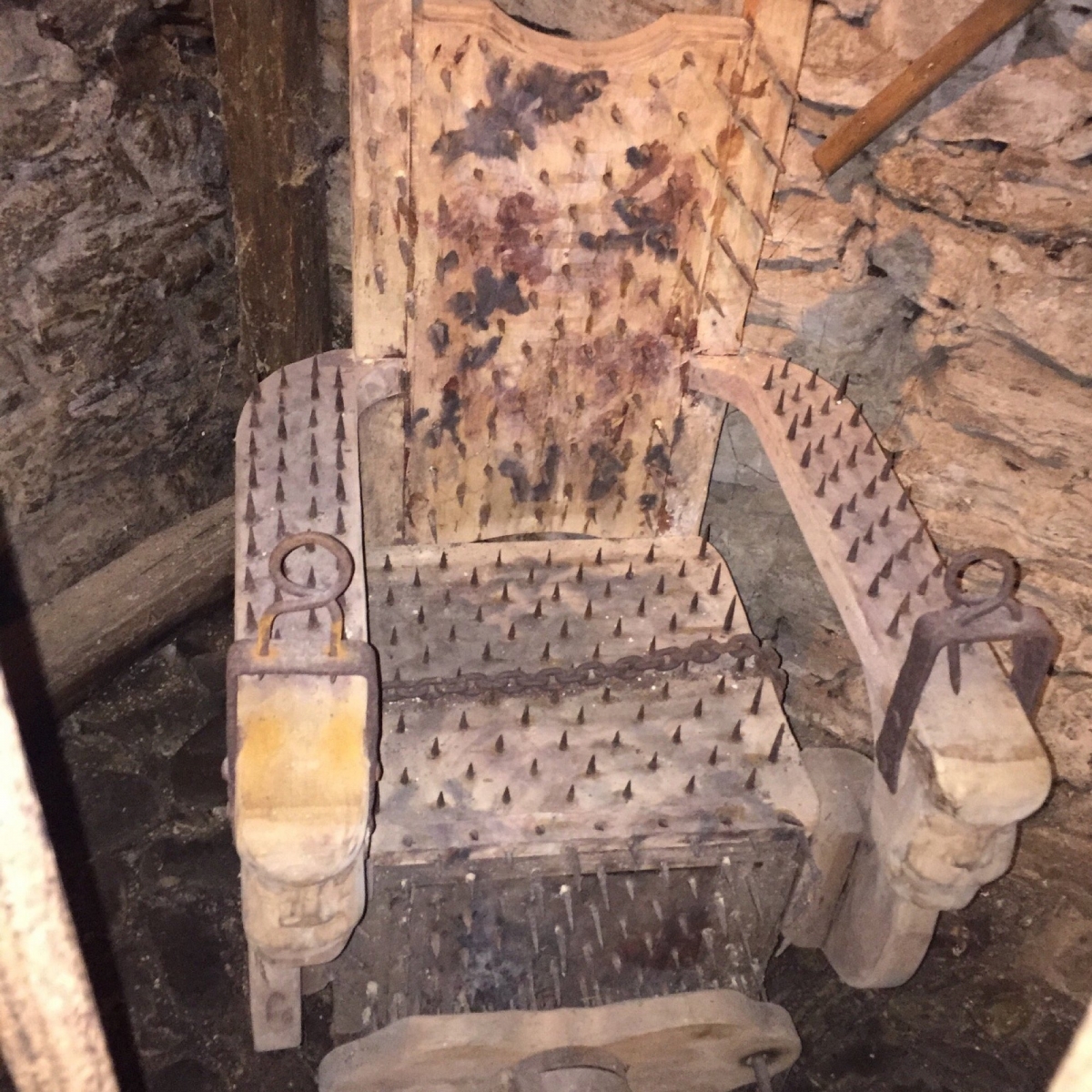
In the Museum of historical motorcycles, you can feel the history at every step. It is located in an old building where there was a factory and is currently a restaurant. Also, there are old furniture, watches, accessories, and Czech paintings, part of the site is used for social events. A ride on rafts of wood by the River Moldava is a different way of navigating and which will allow you to encircle the entire city, it is a major attraction for everyone who visits Český Krumlov, there are several points where you can rent a boat.
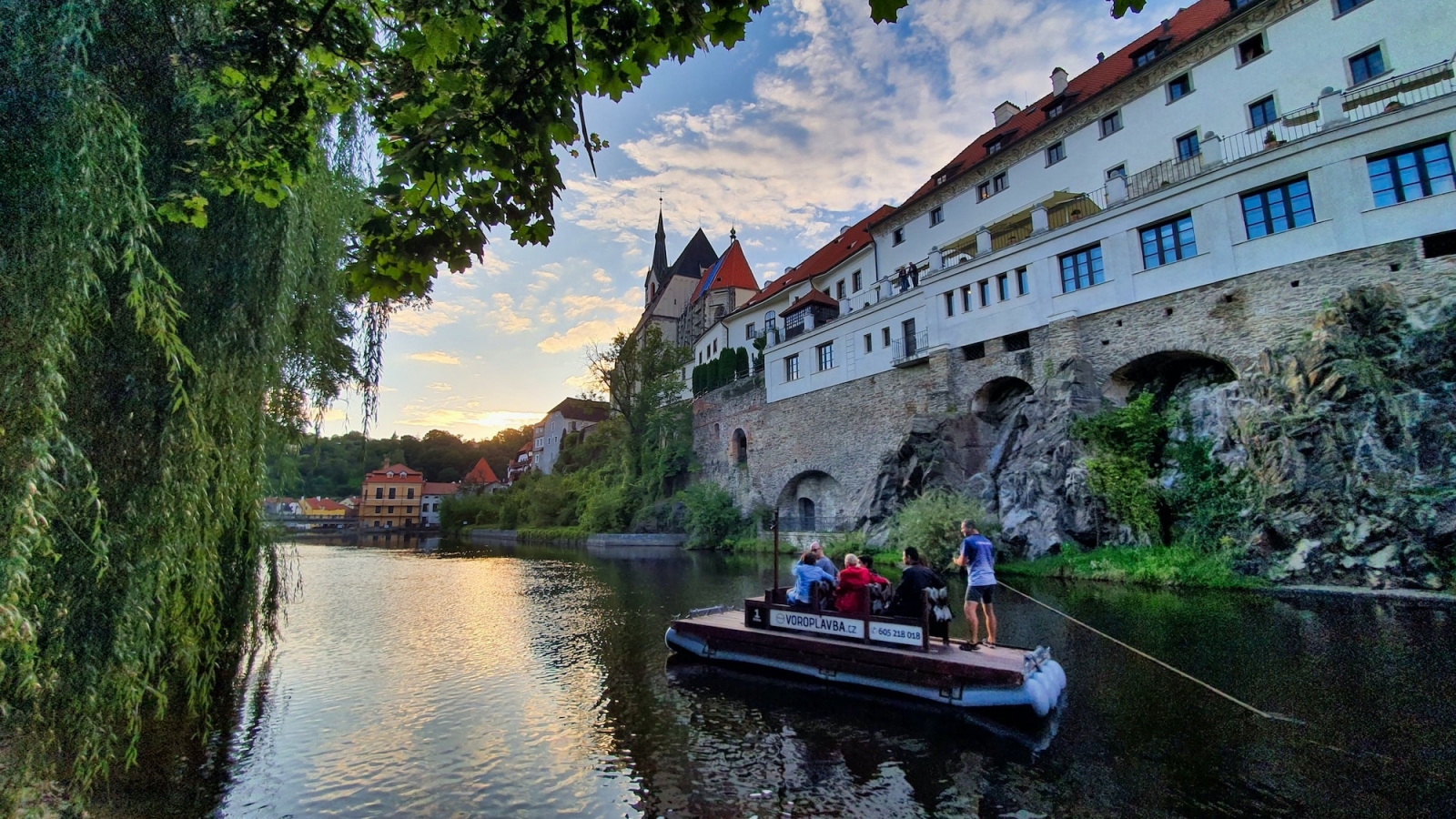
A place that can be amusing for the whole family is a visit to the graphite mine, which opened its doors in 2007 and has become a museum on the mountain, in which you walk surrounded by beautiful scenery and large trees. Despite being a village not very large, if you like sports there are adequate facilities to do some disciplines like ice skating, swimming, activities in the snow (in winter time), riding a horse, bowling, hunting, cycling, and hiking.
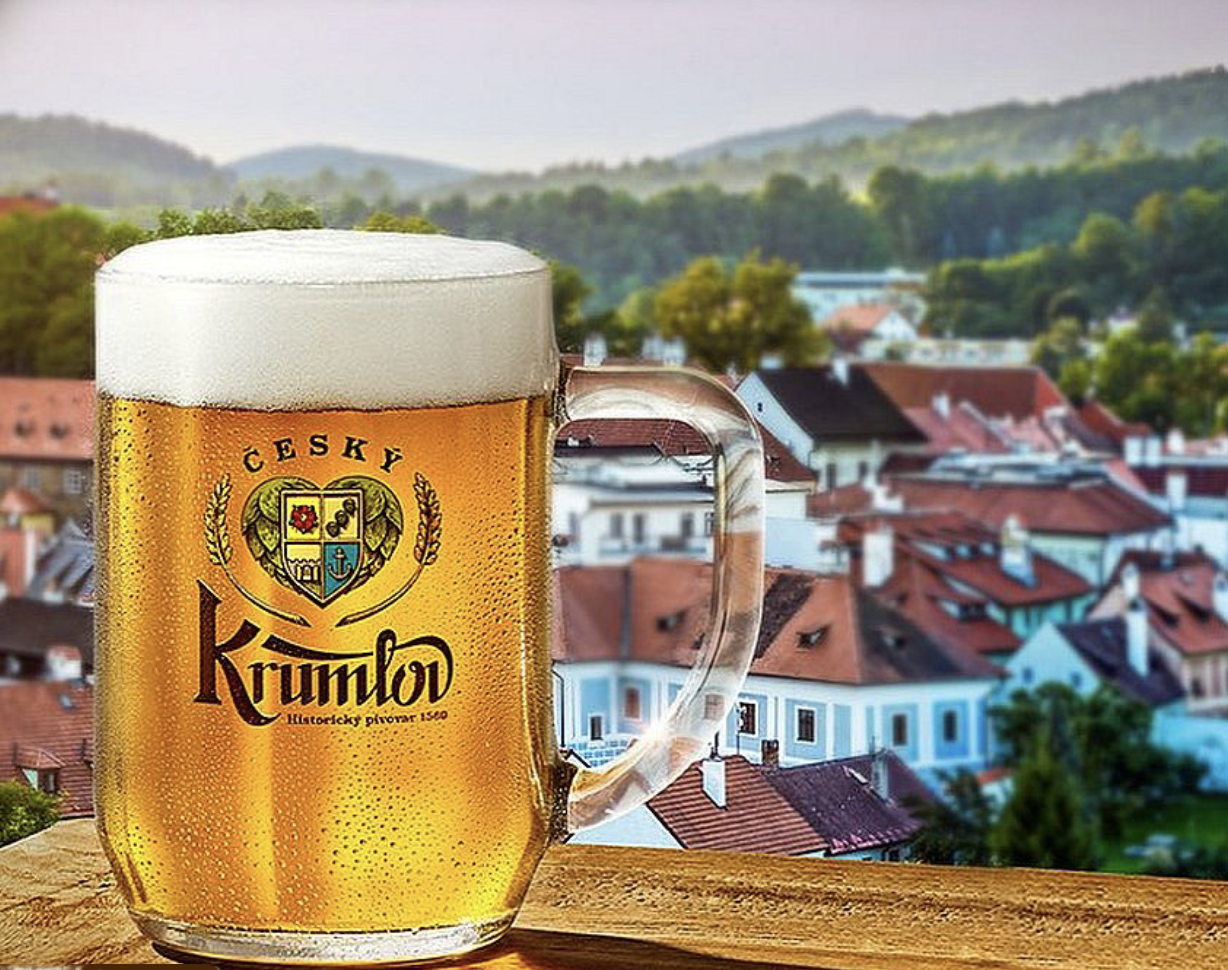
Another place that you will enjoy for sure is to visit the local brewery Eggenberg, with over 400 years of history, they will explain to you everything about its process of development and how important it is for the city. Remember that you can not go without trying at least one bottle of this drink.
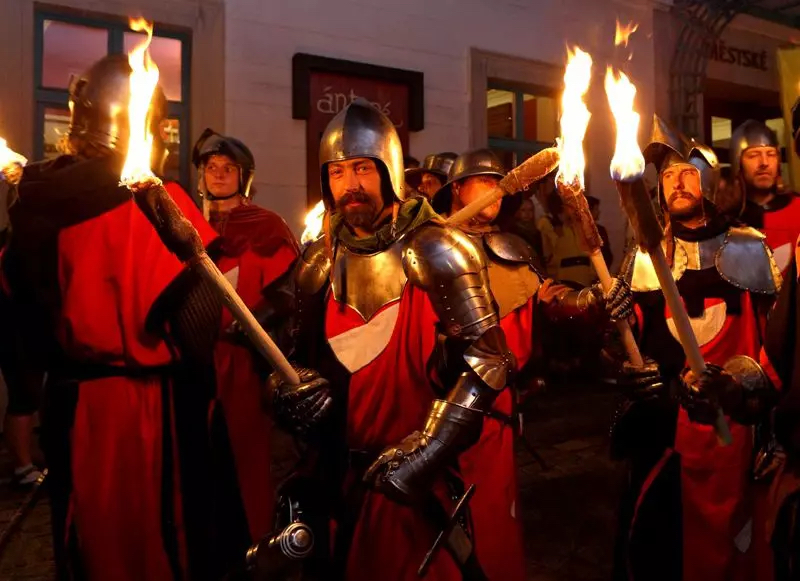
A celebration to which it is advisable to go is the Festival of the rose of five petals which is happening in June, during the holiday everything is transformed for three days into the Renaissance and carry out historical Cavalry, crafts fairs tournaments, banquets, medieval music, and a parade of historical costumes. No doubt an experience that many people can enjoy.
Regarding theaters, there are 2 very special in Český Krumlov, one is located in Castle, it is the best preserved Baroque Theatre in Europe, they have frames painted hands, wooden seats and very good rudimentary sound effects. The other is the rotating theater which is in the garden of the Palace and in the summer months more than 600 spectators enjoy the classics open.
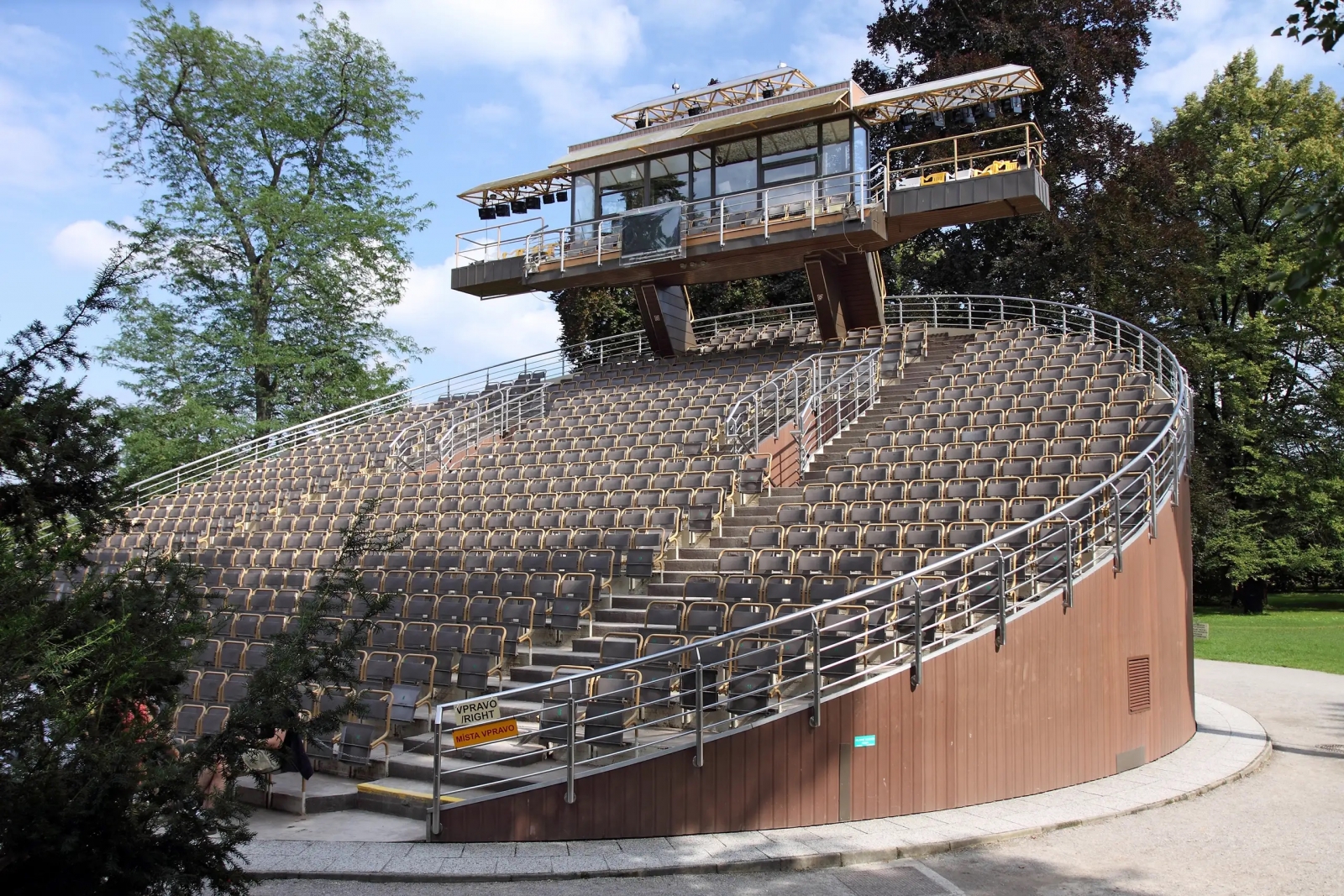
Bohemia - a historical country full of preserved monuments
Bohemia has a rich history that dates back to ancient times. Thanks to this, countless monuments have been preserved in the territory of Bohemia. You can visit a really huge number of fortresses, rotundas, basilicas, and churches, but also castles and palaces. Probably the most famous Karlštejn castle is worth mentioning. Of the castles, we definitely recommend a visit to the Hluboká State Castle. It is located in the beautiful landscape of southern Bohemia, which is worth a longer visit.
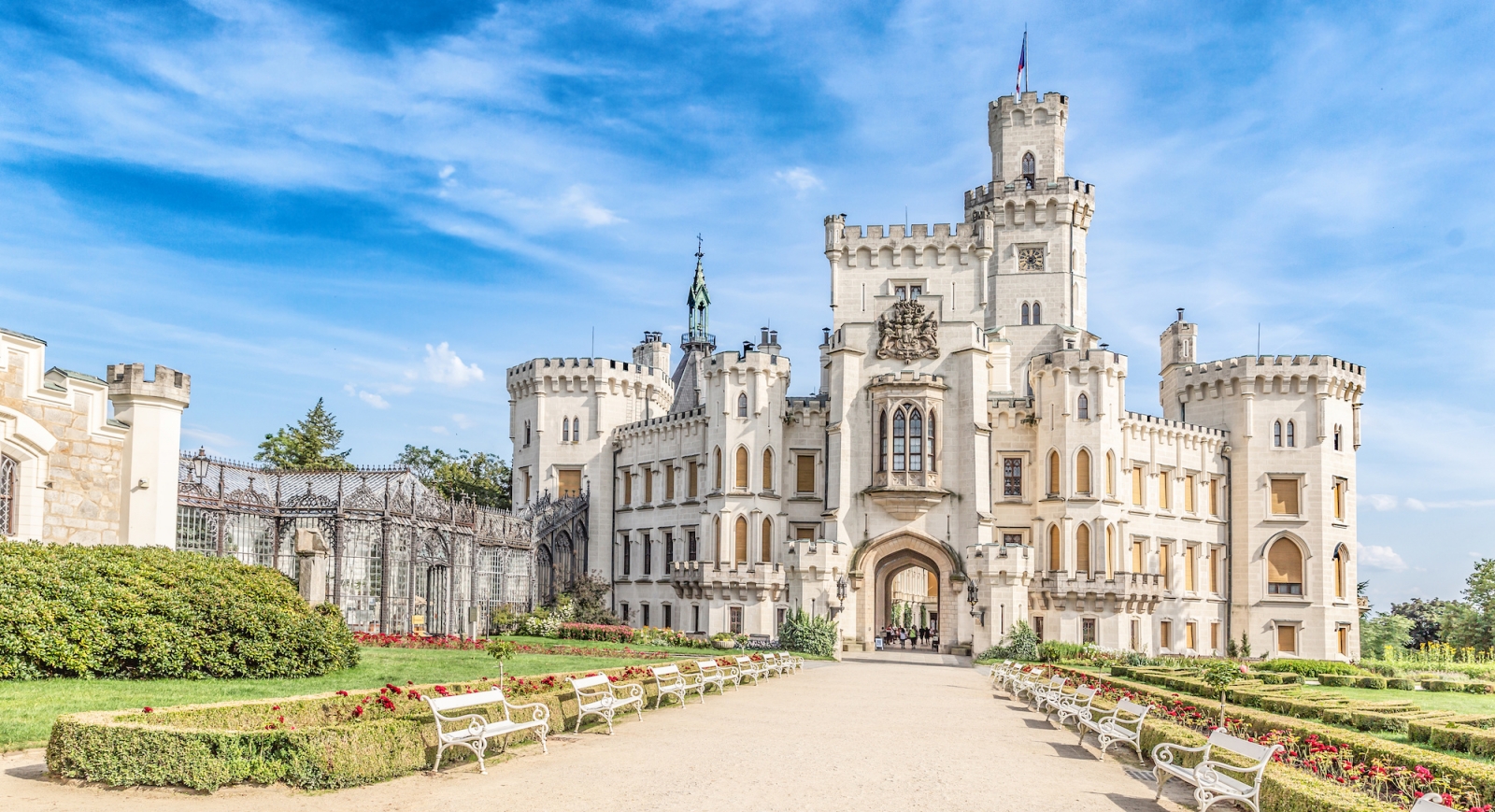
Castle Hluboká, which stands on a Vltava River hill, 9 kilometers north of České Budějovice, is a pearl of architecture. This republican gem has undergone various reconstructions and changes over the centuries, and several architectural styles have left their mark on it. Today it is considered the most picturesque monument in Czechia and a visitor magnet. It is a definite tourist attraction for South Bohemia.
At first, the Gothic castle was constructed at the end of the 15th century by Vilém of Perštejn. During the next century, it was renovated in the Renaissance style. Hluboká switched owners unhurriedly until 1660 when the castle came into the hands of the famous Schwarzenberg dynasty when Jan Adolf I Schwarzenberg purchased it. In 1720-1740 it was reconstructed in the Baroque style and in the next century the castle acquired a romantic style. The current appearance of the court and gardens were significantly influenced by Princess Eleonora, born Princess of Liechtenstein, the wife of Prince Jan Adolf II from the Schwarzenberg lineage. The couple was enchanted by Winsdor Castle in England, from which Eleonora implemented most of her ideas, not only in the interiors but also in the landscaping of the park and the surrounding territory. The Schwarzenberg had a residence here until 1939 when the final owner dr. Adolf emigrated before the Nazis.
South Bohemia - the pearl of the Czech Republic
South Bohemia is one of the most beautiful regions of the republic. There is a picturesque area of famous South Bohemian ponds, which, thanks to its flat terrain, is suitable for bike trips for the whole family. In South Bohemia, we cannot forget Šumava either. The naturally rich landscape must captivate every nature lover. For example, you can go on a trip from Churáňov via Zlatá studna to Horská Kvilda or from Javorník to the Royal Stone and menhirs. Whichever route you choose, you will definitely not be bored and you will get to know the true jewel of Czech nature. A short distance from Šumava is also the Boubín Forest, which tries to preserve nature in its original form for future generations.
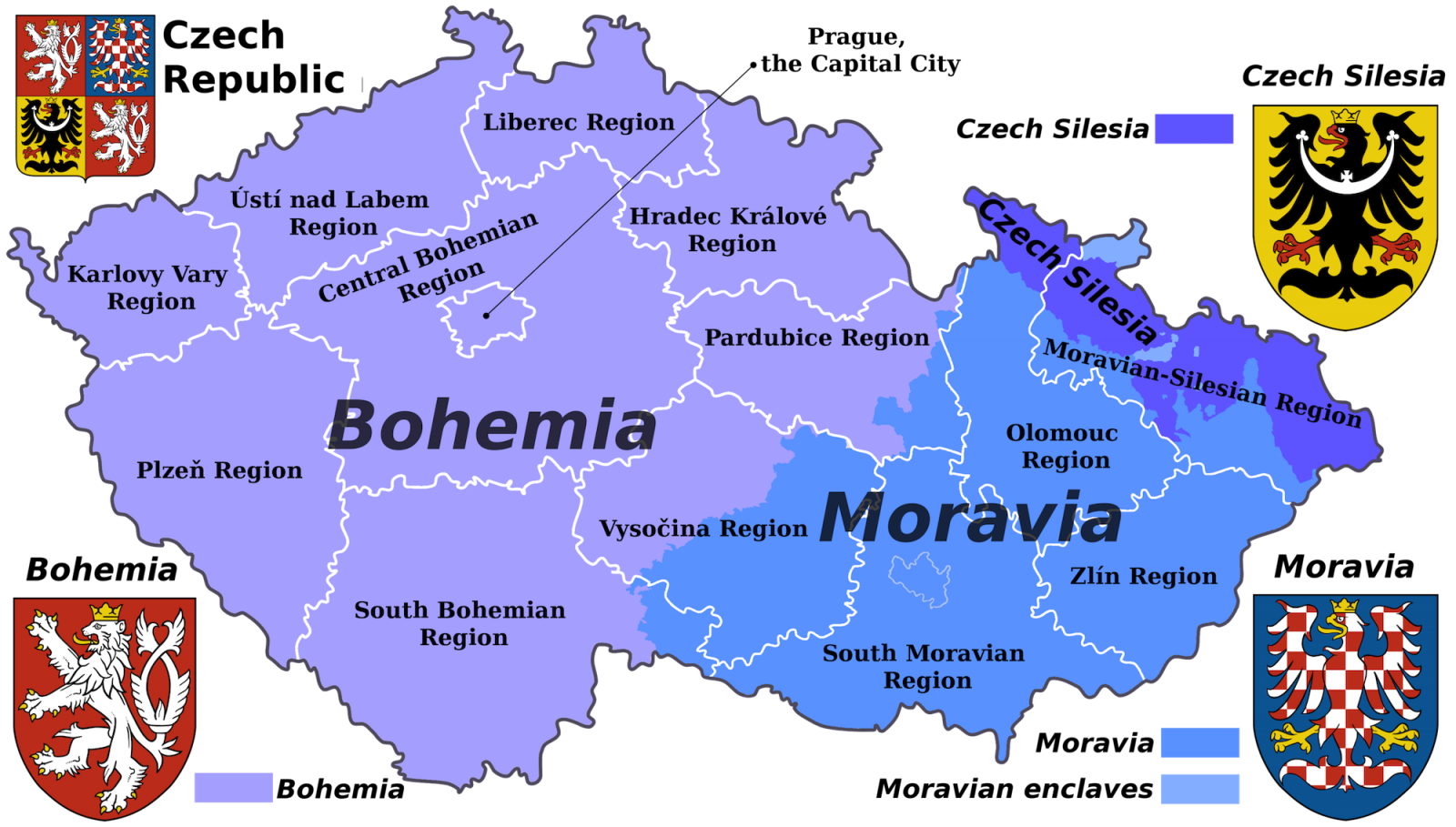
Discover the beauty of the Vltava from a kayak or canoe
Boating has a long tradition in Bohemia. Rafting down the Vltava has become a real hit in recent years. Every year, many boaters head to Vyšší Brod, where they rent equipment and sail through the beautiful landscape of the meandering Vltava River. The greatest experience awaits when you arrive in historic Český Krumlov.
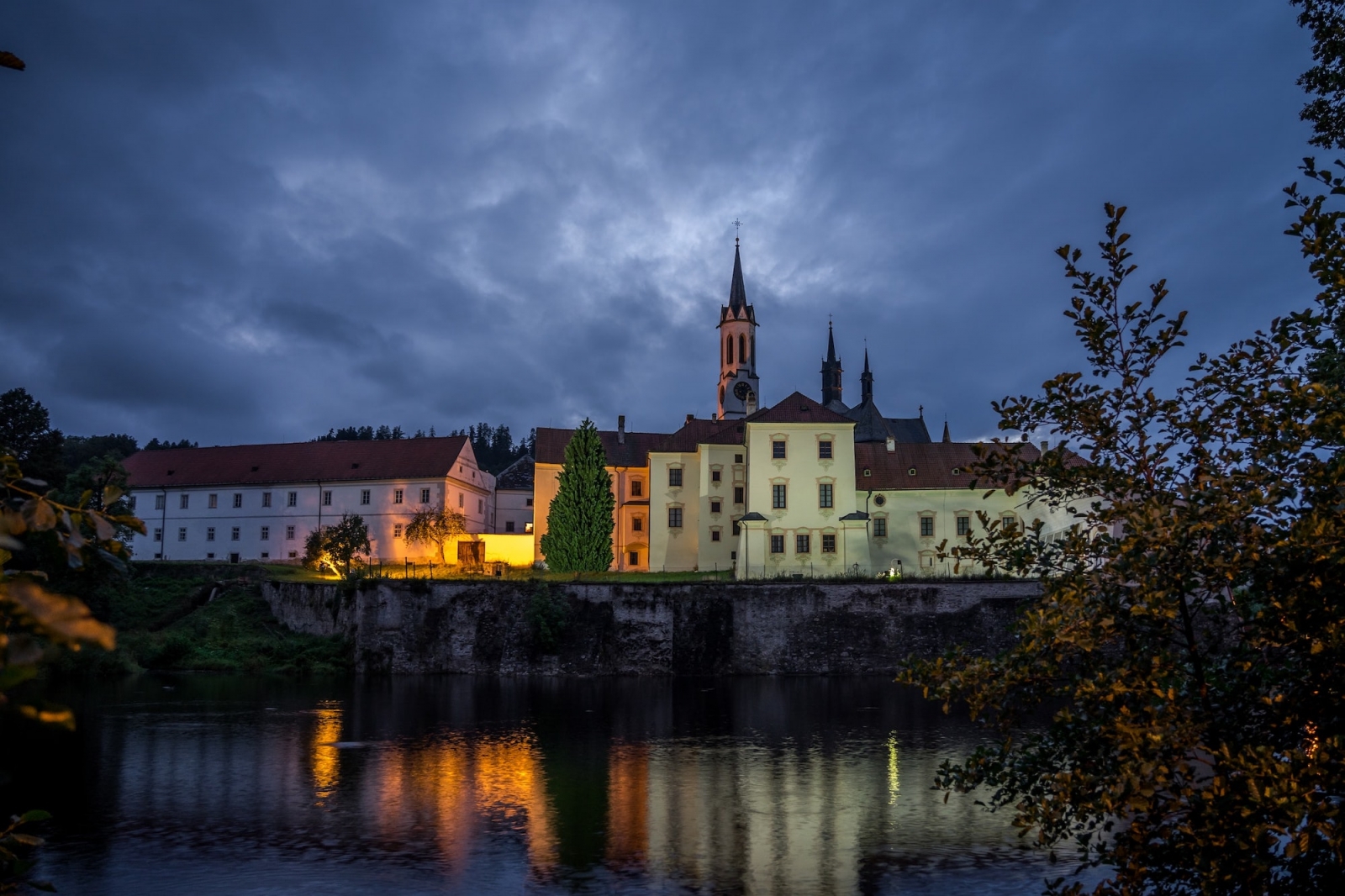
Vyšší Brod is a ancient city in Český Krumlov aglomeration in the South Bohemia of Czechia. It is the very southern metropolis of the Czech Republic. The most prominent historic gem is Vyšší Brod Monastery. The medieval city center of Vyšší Brod together with the monastery is sufficiently conserved and covered by the law as an urban complex. Vyšší Brod is settled on the Vltava river. Větší Vltavice and Menší Vltavice watercourses stream into the Vltava exactly in this location. The Lipno II Reservoir has encountered close to the city and is provided by the Vltava.
The Municipal Theater Český Krumlov will also provide great entertainment, on the boards of which not only plays are regularly performed, but also various musical performances. You can also listen to some concerts in the theater club.
Breathtaking views
Another point that you simply have to tick off is the wonderful views of the city. One is just down the road from the bus station into the center, so stop and enjoy. You will have the castle in the palm of your hand from the viewpoint in Horní ulica, which is also a place where you will definitely want to take a photo (or twenty, I understand) as a souvenir. When you go to the center you will see two arches on the right side, go through them, and here you are! My other favorite view of the city is not quite a lookout, but it's certainly worth mentioning. Continue along Upper Street, stop at the corner where it meets Masna, and turn to the right. Beautiful, isn't it?
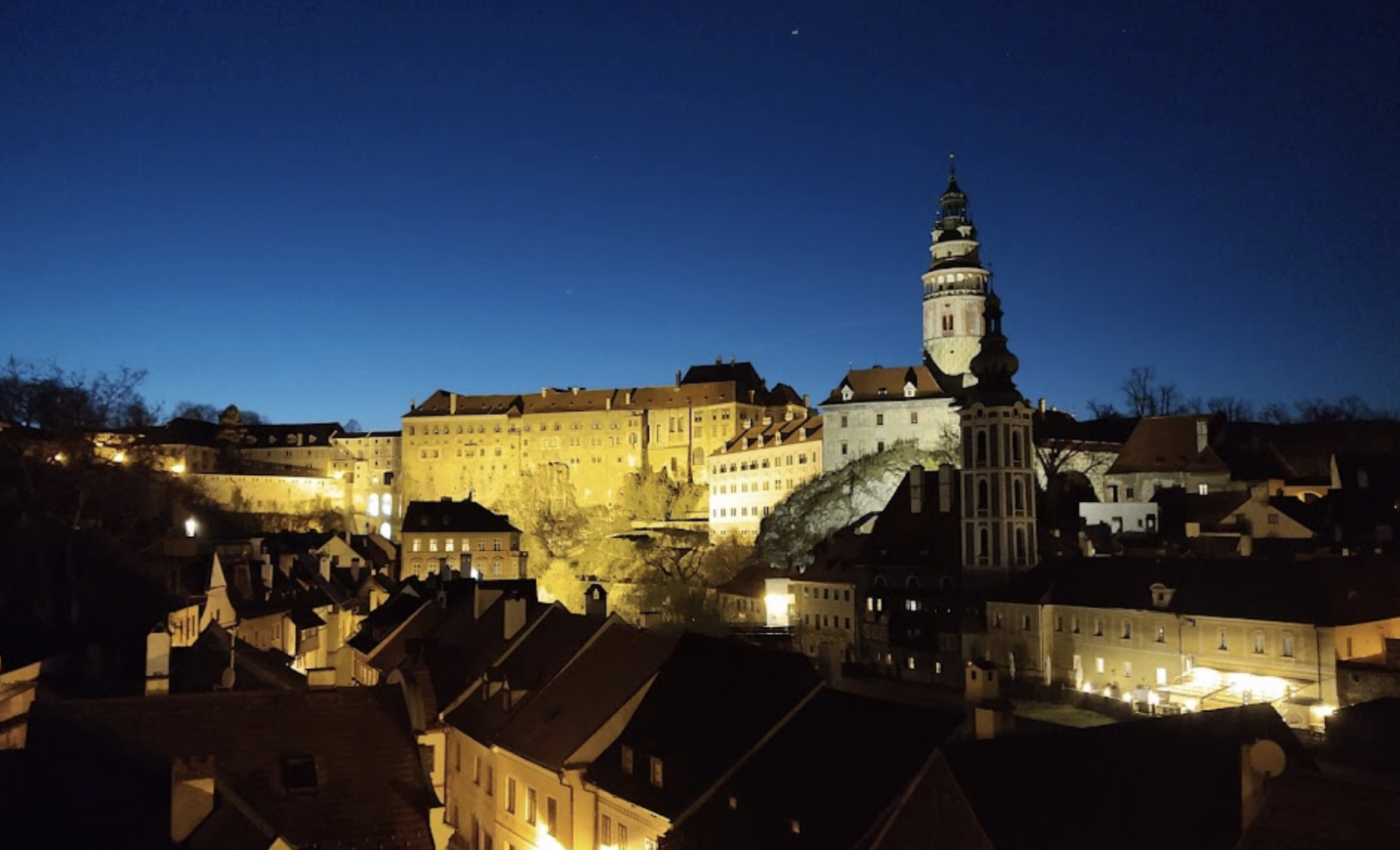
Perhaps the most beautiful view of the streets of this wonderful city will come to you when you cross the Cloak Bridge in the direction of the castle. There will already be a lot to admire from it, but wait until you get to the viewpoint on the left side, which is part of the castle garden. The castle tower, from which you can see the whole city beautifully, must not be missing from the list. By the way, how many cute, colorful houses can you count?
Tip: An unusual view of the city is offered by sightseeing cruises on a raft that takes you through the center. You can take children from 1 year and even pets with you!
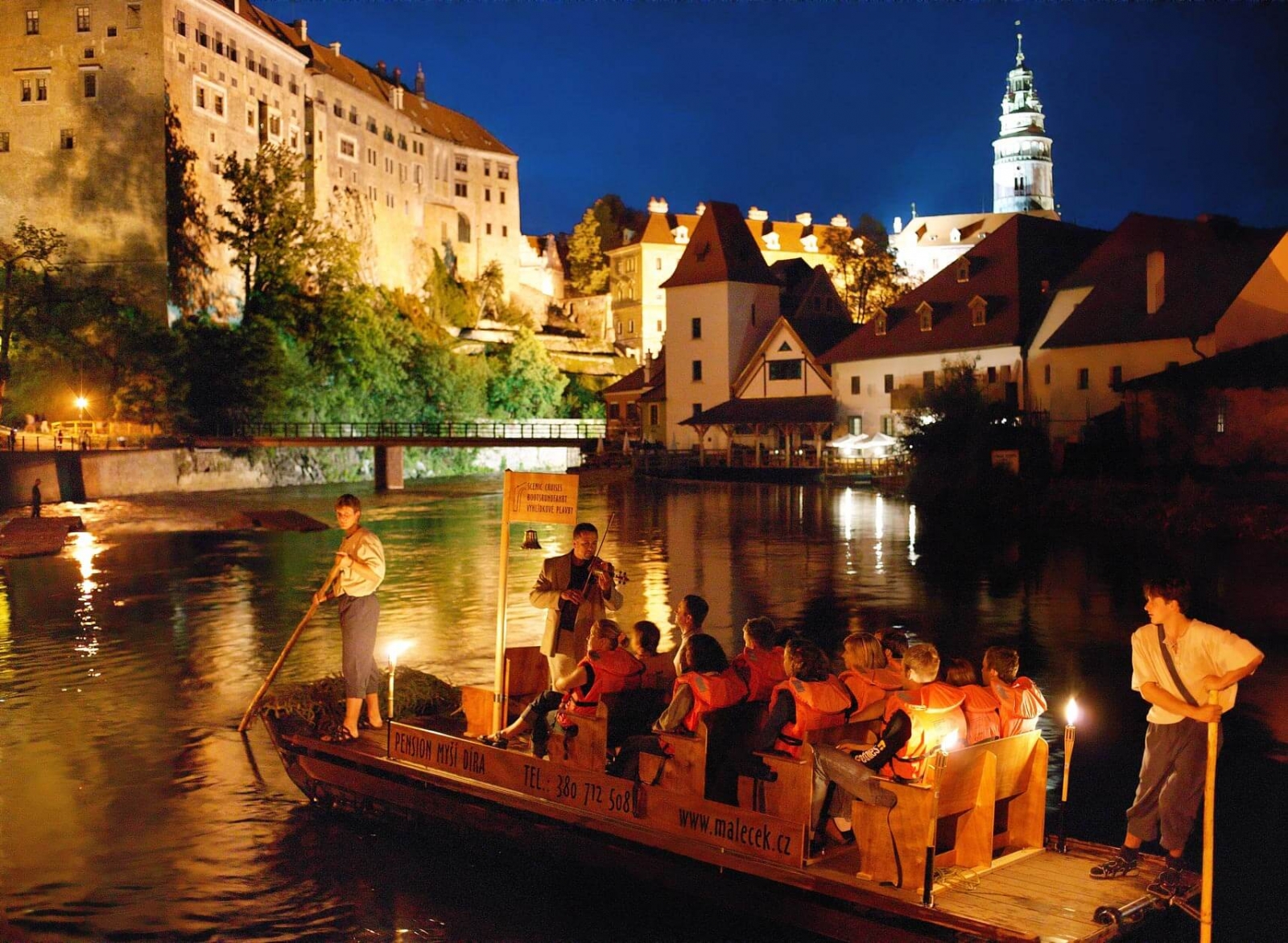
Evening raft cruise for individuals in Český Krumlov
Cruise through the historic city center at dusk. You will sail through the meander of the town of Český Krumlov and pass two weirs. You will end the cruise at the Krumlov Brewery, still in the city center:
- the cruises operate from May to September
- category: romantic sunset cruises
- price of the cruise is 540 CZK/person (22 euros)
- departures at 20:00
What about transportation?
Of course, the most convenient way will be by car, for example, you can get here from Prague in a little over two hours, from Brno in three. Public transport is definitely not a bad idea either, there are comfortable buses that stop at a strategic location - from the bus station you are in the center on foot in a short time. Most of them are still built in Špičák, which is also quite close to the center. There are also trains to Krumlov, but the station is a bit out of the way, the journey takes longer and you will most likely have to change trains, so I recommend the bus.
Read our previous article Lonavala - Beautiful Hill Station in India
Read our next article Feast in Iceland










